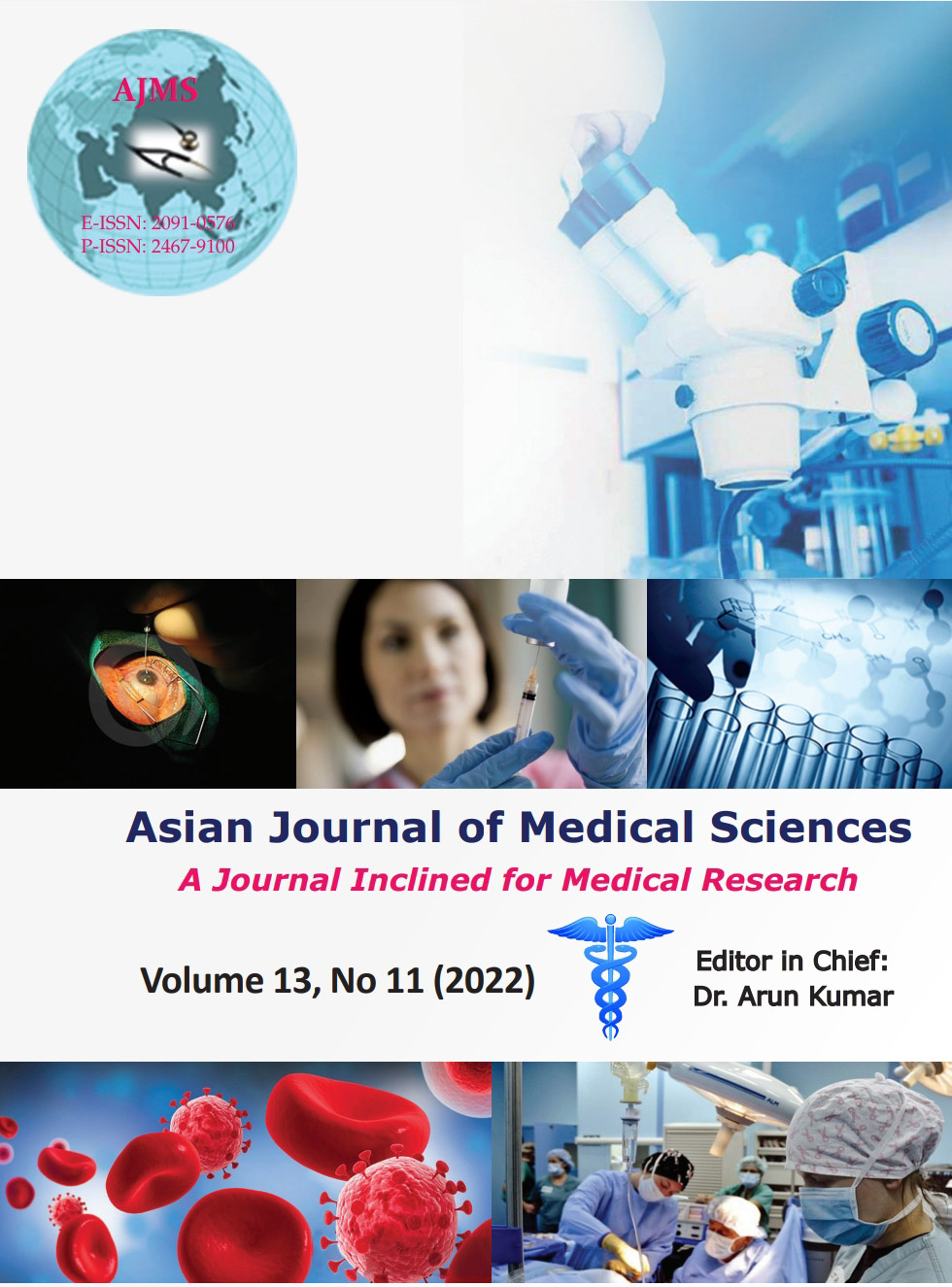Evaluation of outcome in arc of motion of elbow after arthrolysis in post-traumatic stiff elbow through posterior triceps reflecting anconeus pedicle approach
Keywords:
Arthrolysis; Elbow stiffness; Arc of Motion; Triceps reflecting anconeus pedicle approachAbstract
Background: The elbow is a synovial hinge joint, with a high chance of stiffness. A stiff elbow is an elbow with a loss of extension of >30° and flexion of <120 which can result due to post-traumatic events around elbow. Surgical intervention is required if conservative treatment fails. The arthrolysis of the elbow by posterior approach has been reported less widely.
Aims and Objectives: This study aims at reporting the arc of motion of the elbow after arthrolysis by posterior approach by TRAP approach.
Material and Methods: This study was done on 26 patients with post-traumatic elbow stiffness through posterior triceps reflecting anconeus pedicle graft approach. The mean age of patients in our study is 30.8, ranging from 15 to 54 years. After surgery, patients were reviewed to assess arc of motion and fixed flexion deformity (FFD) improvement, MAYO and oxford score.
Results: Our study showed increase in arc of motion from 50.7° to 90.7°, FFD decrease from 31.3° to 18.2° and MAYO score which had a pre-operative mean of 77.3, increased to 90 postoperatively with excellent result in 18 cases (69.2%) and good in eight cases (30.8%). Oxford score had an improvement from 21.8 to 40.3 showing satisfactory result in 11 cases.
Conclusion: The approach described in our study is ideal for posterior bony blocks with maintaing intact extensor mechanism and less chance of neurovascular damage. Stability of the joint is maintained with feasability to do ulnar nerve transposition.
Downloads
Downloads
Published
How to Cite
Issue
Section
License
Copyright (c) 2022 Asian Journal of Medical Sciences

This work is licensed under a Creative Commons Attribution-NonCommercial 4.0 International License.
Authors who publish with this journal agree to the following terms:
- The journal holds copyright and publishes the work under a Creative Commons CC-BY-NC license that permits use, distribution and reprduction in any medium, provided the original work is properly cited and is not used for commercial purposes. The journal should be recognised as the original publisher of this work.
- Authors are able to enter into separate, additional contractual arrangements for the non-exclusive distribution of the journal's published version of the work (e.g., post it to an institutional repository or publish it in a book), with an acknowledgement of its initial publication in this journal.
- Authors are permitted and encouraged to post their work online (e.g., in institutional repositories or on their website) prior to and during the submission process, as it can lead to productive exchanges, as well as earlier and greater citation of published work (See The Effect of Open Access).




